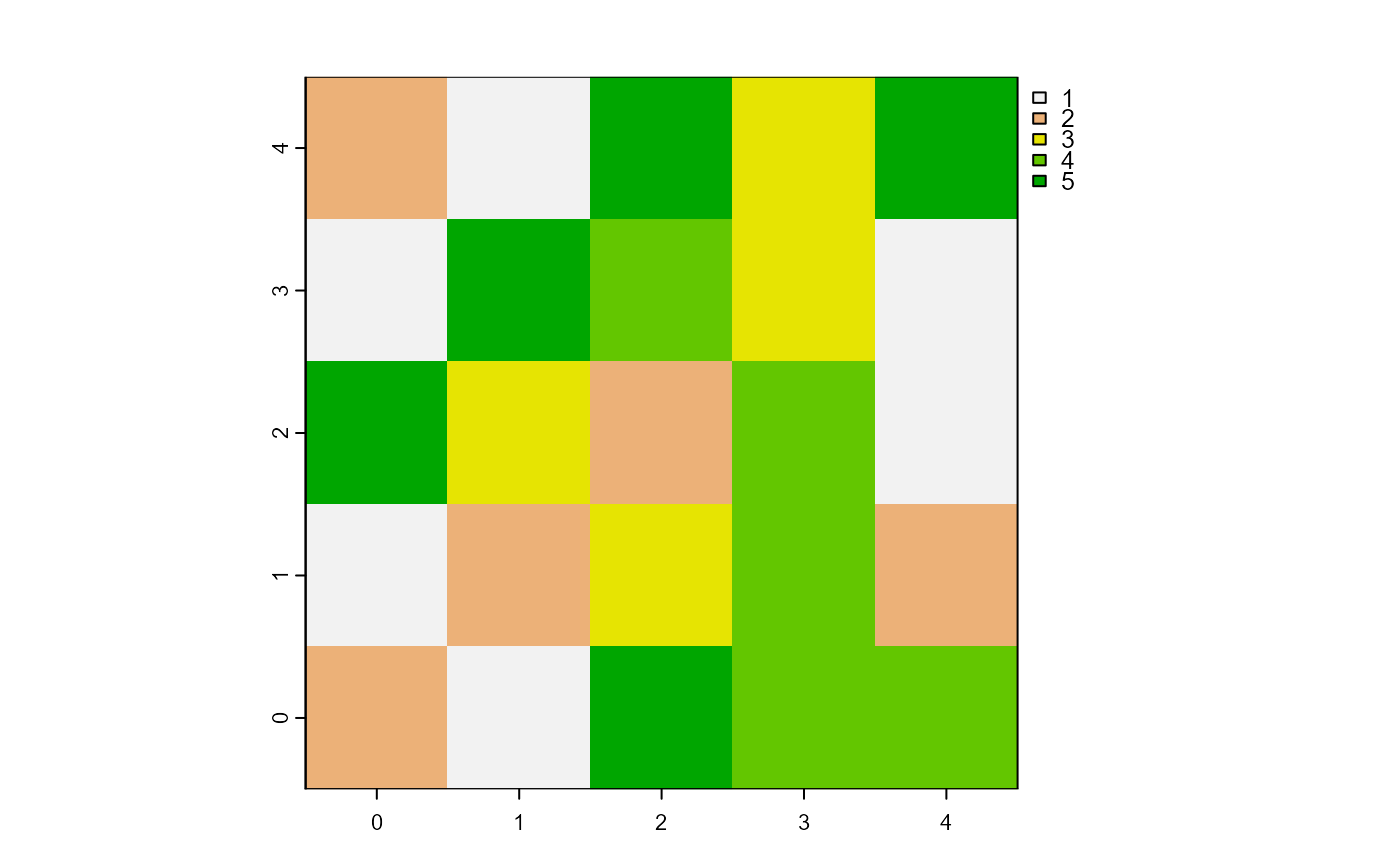Report the patches or the turtles among agents which have their variable
equals to specific values.
NLwith(agents, world, var, val)
# S4 method for matrix,worldMatrix,missing
NLwith(agents, world, val)
# S4 method for matrix,worldArray,character
NLwith(agents, world, var, val)
# S4 method for agentMatrix,missing,character
NLwith(agents, var, val)Arguments
- agents
Matrix (
ncol= 2) with the first columnpxcorand the second columnpycorrepresenting thepatchescoordinates, or- world
WorldMatrixorworldArrayobject.- var
Character. The name of the selected
agentsvariable. Ifagentsarepatchesand theworldis aworldMatrixobject,varmust not be provided. Ifagentsarepatchesand theworldis aworldArrayobject,varis the name of the layer to use to define thepatchesvalues. Ifagentsareturtles,varis one of theturtles' variable and can be equal toxcor,ycor, any of the variables created whenturtleswere created, as well as any variable created usingturtlesOwn().- val
Numeric or character. Vector of any length.
Value
Matrix (ncol = 2) with the first column pxcor and the second column
pycor representing the coordinates of the patches among the agents
which have their variable
equals to any val, or
Details
world must not be provided if agents are turtles.
References
Wilensky, U. 1999. NetLogo. http://ccl.northwestern.edu/netlogo/. Center for Connected Learning and Computer-Based Modeling, Northwestern University. Evanston, IL.
Examples
# Patches
w1 <- createWorld(
minPxcor = 0, maxPxcor = 4, minPycor = 0, maxPycor = 4,
data = sample(1:5, size = 25, replace = TRUE)
)
plot(w1)
 p2 <- NLwith(agents = patches(w1), world = w1, val = 2)
# Turtles
t1 <- createTurtles(
n = 5, coords = randomXYcor(w1, n = 5),
breed = c("sheep", "sheep", "wolf", "sheep", "sheperd")
)
t2 <- NLwith(agents = t1, var = "breed", val = "sheep")
t3 <- NLwith(agents = t1, var = "breed", val = c("sheep", "wolf"))
p2 <- NLwith(agents = patches(w1), world = w1, val = 2)
# Turtles
t1 <- createTurtles(
n = 5, coords = randomXYcor(w1, n = 5),
breed = c("sheep", "sheep", "wolf", "sheep", "sheperd")
)
t2 <- NLwith(agents = t1, var = "breed", val = "sheep")
t3 <- NLwith(agents = t1, var = "breed", val = c("sheep", "wolf"))